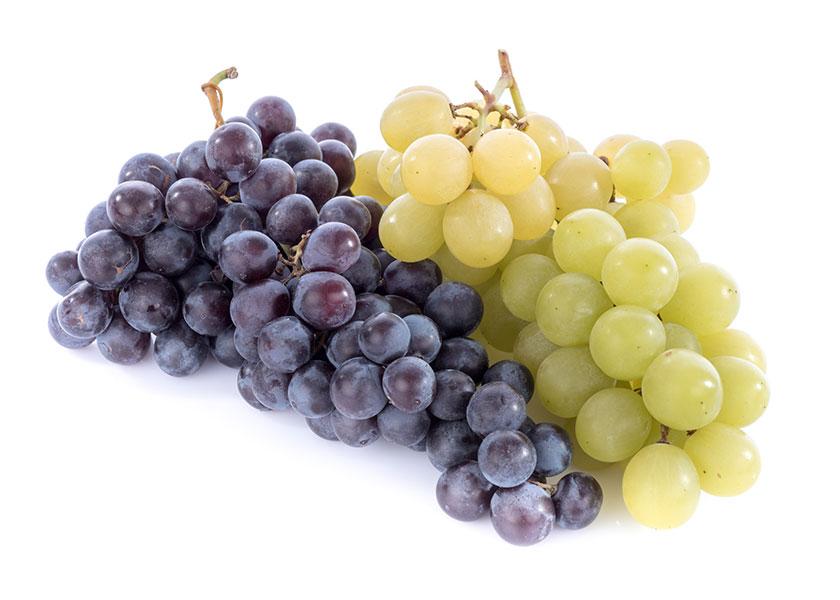USDA estimates slight decline in Chilean grape exports

Chilean table grape production and exports may decline about 7% this year, according to the USDA's Foreign Agricultural Service annual report on Chilean deciduous fruit.
In the marketing year 2022-23, USDA’s FAS Santiago office estimates that table grape production will decrease by 7.1%, totaling 732,000 metric tons.
The decrease in production, according to the report, is caused by a decrease in table grape area planted. Planted table grape area decreased from 133,068 acres in 2011-12 to 106,500 acres in 2021-22.
For the marketing year 2022-23, the report said planted table grape area is expected at 105,000 acres, a 1.4% decrease from 2021-22.
“According to industry contacts, production of new varieties is taking the place of traditional varieties such as red globe,” the report said. “While new varieties like Allison, Arra-15, Timco, and Sweet Celebration are growing in area, more traditional varieties are decreasing at a faster rate.”
The report said table grape production is trending downwards because of drought and competition from more profitable crops.
Drought has caused a decline in table grape production in recent years, the report said, and the lack of water is considered a structural problem that will persist in the upcoming marketing years.
“Notably, rainfall in marketing year 2022-23 was abundant and may have mitigated more serious declines in grape production; however, those gains are not expected to be long-term,” the report said.
The most recent data from the Chilean Ministry of Agriculture’s Office of Policy and Studies shows a decrease in the planted area across all regions, the report said.
The USDA said the decrease in planted area is especially high in the Valparaiso region, where walnuts and citrus have replaced some of the planted table grape area, and in the O’Higgins region, where more profitable crops like cherries and walnuts are growing in planted area.
The USDA said Chilean grape exports will decrease by 7.1%, according to the report, totaling 565,000 metric tons.
Last season saw a 15.7% increase in Chilean table grape exports, the report said, totaling 608,110 metric tons.
Between March and May in 2022, table grape exports increased significantly over the same period in 2021, the report said.
Delays at both Chilean and international ports were longer from February to April, the report said. In March 2022, the Chilean Fruit Producers Association (FEDEFRUTA) requested priority at the Chilean port of Valparaiso for table grapes, due to the overwhelming demand for cargo and the perishable nature of their products, the report said.
During March and April of 2022, Chilean exporters reported delays in the port of Philadelphia, which the report said was caused by the requirement for methyl bromide fumigation. The delays caused fines, demurrage, and decreased quality of some of the shipments that were delayed for long periods of time, the report said.
The U.S. is the main market for Chilean table grape exports and shipments, accounting for about half of Chilean grape exports. Shipments to the U.S. in 2021-22 increased by 21.7% to 310,033 metric tons.
China is the second largest market for Chilean table grapes, buying about 77,610 metric tons in 2020-21, or about 12.8% of total Chilean grape exports, the report said. Chilean exporters expect shipments of red globe and other red seedless varieties to China to remain strong in 2022-23, the report said.
Apples and pears
The USDA report estimates Chilean apple production at 1.03 million metric tons, a 0.6% decrease from last season based on lower planted area. Apple exports will total 605,000 metric tons in 2022-23, a 0.8% decrease from last season, according to the report.
“Higher yields in the marketing year 2022-23 should offset some of the reduction in planted area and thus exports volume is expected to decrease very slightly,” he said.
The declining trend in planted pear area, report said, will mean Chilean pear exports will decrease by 2.6% and total 112,000 metric tons.
“Pear producers face low margins compared to other crops and increasing costs have limited the planted pear area growth,” the report said. “However, existing pear producers are very efficient, and can export and obtain profits.”







